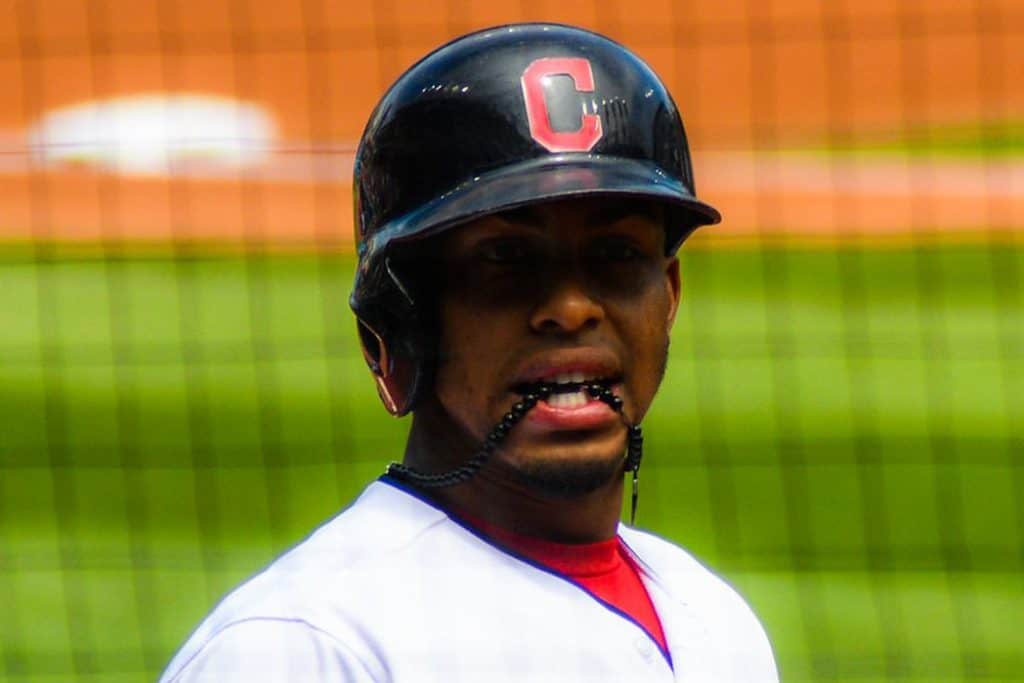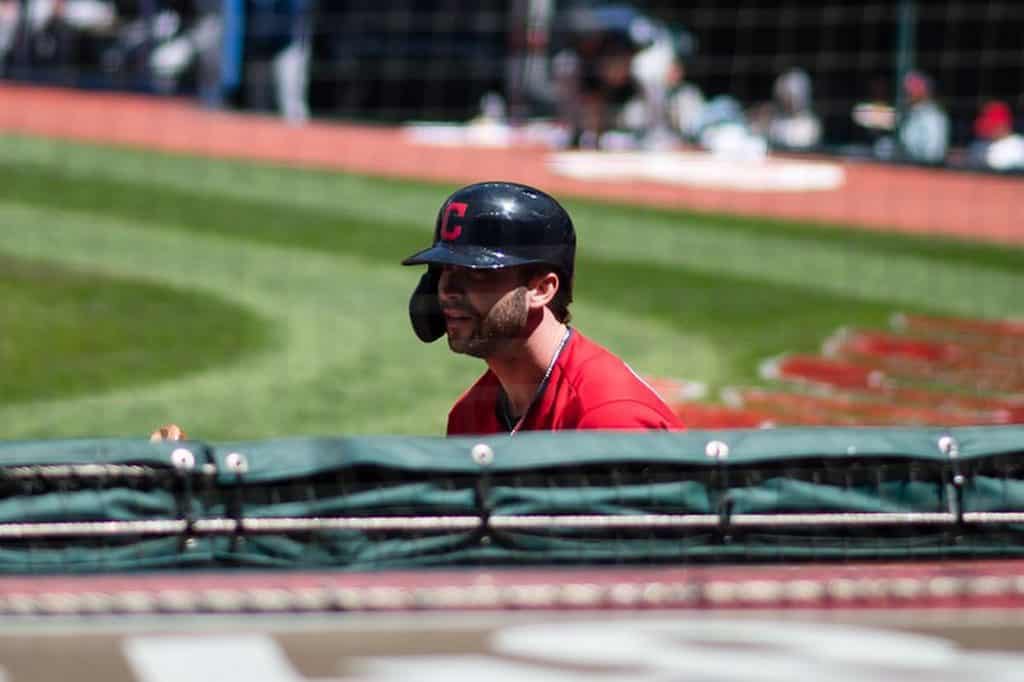Why Do Baseball Helmets Cover One Ear? (5 Reasons Listed)
In general, as it is not a full-contact sport, we can say that baseball is safer than other major sports, football or hockey for example.
Still, with balls often flying at 100 mph, some protection is necessary. Of course, the ball flying at a lighting speed can do the most damage if it hits the player in the head.
Hitters while at-bats are particularly at risk as they sometimes face wild and fast pitches.
For that reason, baseball helmets became mandatory in 1971.
Today, it’s a common practice at all levels of the game. However, while watching baseball, many spectators are puzzled by one thing.
Why do baseball helmets cover one ear?
One-flap helmets look peculiar and are specific to baseball. You won’t find them in any other sport.
Table of Contents
Why Do Baseball Helmets Cover One Ear?

The number one reason for wearing helmets in baseball is, of course, safety.
However, a more observant baseball fan will notice that helmets covering just one ear appear only in the majors.
At the lower levels, including college and high school baseball and the Little League, batting helmets with both ear flaps are mandatory.
The MLB rule 3.08 on helmets is a result of a compromise between the league and the players.
Still, there are some very practical reasons behind the answer to the question of why do baseball helmets cover only one ear.
Safety
At the pro level, pitchers are more accurate with their throws and batters generally see less potentially dangerous wild pitchers.
Still, it would be risky to stand in the batter’s box with no head protection at all.
So, the solution was to wear single-flap helmets to reduce the risks but still feel comfortable.
Hitters who bat left-handed will wear a helmet with a flap covering only his right ear.
His left ear is never exposed to the pitcher, so it can be left unprotected and there’s no need for an extra earpiece.
Of course, this also works vice versa. Right-handed batters will use helmets with only a single ear flap covering their left ear.
The only exceptions here are the switch hitters.
These are the players that may bat from either side of the plate.
Depending on which side of the plate they’re batting from, switch hitters will have both their ears exposed.
To make things simpler and easier on themselves, they usually use helmets covering both ears.
It’s extremely rare to see switch hitters using two single-flap helmets and keeping track to know which one they should put on before going to the plate.
Still, some players, like White Sox’ Yasmani Grandal, do just that.
Comfort
Everyone who had a chance to wear a baseball helmet knows that they can be somewhat uncomfortable and a hassle to take off and on.
Helmets with only one ear cover make things a bit better in this department.
They’re lighter than dual-flap helmets and provide a slightly looser fit while still not fling off the head while running or sliding.
Another benefit of single-flap helmets is that they provide more airflow around the head.
As the dual helmets fit more snugly they can make players hot and sweaty.
Communication
If you’ve ever been to a pro baseball game, you know how loud the fans can get.
It’s often difficult for players to hear the coach’s instruction through all that noise.
Having a helmet covering both ears makes it even harder.
While non-verbal communication is a big part of the game, players still often need to hear vocal advice from their coaches.
By having one ear uncovered, single-flap helmets improve players’ ability to hear better the instructions coming from base coaches.
At the same time, the exposed ear is still protected, allowing players to feel safe on the field.
Performance
Helmets covering only one ear also help players perform better. Nowadays, the pitchers are throwing more fastballs than ever.
When facing the fastball, a batter has around half a second to decide is he going to swing and where.
Often what looks like one type of throw leaving the pitcher’s hand can turn out to be something else.
As the ball flies toward the batter, the instinctive reaction is to yank the head away to protect it.
However, the longer the batter keeps the level-headed stance, the easier he can square up the baseball with the bat.
When they know that the side of the head facing the pitcher is protected, batters can stay on the ball a tiny bit longer.
And, in baseball, the decision leading to successful play is often made in a matter of milliseconds.
What are C-Flaps?

Lately, more and more players are using the helmet extensions on the left or the right side of their headgear.
These extensions are called C-flaps and they serve to provide extra protection for the batters covering the cheek and the jaw.
C-Flaps were invented more than 40 years ago, but only recently have they gained popularity among the players.
At first, players mostly wore them as they recovered from a face injury, but now a lot of them use them for prevention purposes.
Right now, some of the biggest stars in the game, like Mike Trout, Bryce Harper, and Giancarlo Stanton, are all wearing them.
The C-Flap is made of plastic and can be easily attached to the ear flap protecting the whole face of the batter.
At the same time, they’re designed in a way that doesn’t obstruct the player’s vision or airflow.
Conclusion
In baseball, facial injuries are rare. However, when they occur, they’re usually quite serious and can force players to the sidelines for a significant time.
Still, for a long time, players have opposed the protective headgear, partly because of tradition, and partly because they felt it hindered their freedom of movement and comfort on the field.
Helmets covering only one ear seem to provide a fine balance between the two.
They provide the necessary protection and significantly reduce injury risk.
At the same time, single-flap helmets allow players to feel comfortable and confident while playing the game.




